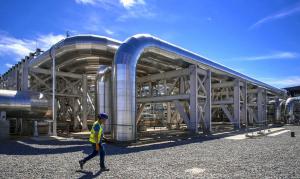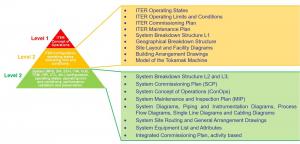Preparing ~100 System Concepts of Operation
System Concepts of Operation (ConOps) documents are used at ITER—and at other science and engineering projects—to provide information on the operation and use of the systems, focusing on modes of operation, operational processes and operator actions.
"The System Concepts of Operation are Level 3 documents in the Technical Baseline, underpinning information that will be part of the General Rules for Operation," explains Rossella Rotella, who coordinates their preparation. "The documents start to have a lot of good level information when system passed the Final Design Review—that's when a robust version is expected. Then, they will evolve with complementary information until the Operational Readiness Review, when we expect to have system finally configured for operation."
A few examples illustrate the purpose of these documents. There is a ConOps in preparation for the torus vacuum system that includes information on the way to pump down and maintain the system under vacuum in the vacuum vessel. The document provides information on how the system is configured to meet these key objectives and how the operator interacts with it.
"A Concept of Operation document not only provides information on system configuration for the execution of specific tasks, but it also provides information about operational interfaces," says Rossella. "Take, for example, electrical distribution or other site service systems like compressed air and secondary cooling water that are necessary for the continuous operation of the facility. Client systems depend on them. So, we need to know how to configure both supplier and client systems, whenever an operational client or the overall ITER facility executes a specific task for commissioning or operation purposes.
Dozens of pages
Other important topics that can be addressed in ConOps documents are scarce resources (the number of events or cycles that a system component can fulfill before maintenance become necessary), system operating ranges (the boundaries under which the system has to be operated), and information about necessary consumables, tools and aids in order to anticipate the materials and warehouse space needed for operation purposes.
"Finally, in ConOps documents we must detail the number and expertise of the human resources necessary to operate the system--either sitting in the main control room, or deployed onsite for operational testing or calibration activities. This sounds like a lot of data, but we expect each Concept of Operation to be a few dozen pages, with descriptive and conceptual information and references to more detailed documents."
Completing the documents
The target is to prepare the "General Rules" one year before the closure of the ITER cryostat. "Preparation for the ConOps documents began in 2020; now, they are in mass production with good progress—70% complete overall for systems that passed the Final Design Review. The target is to reach 100% by the end of 2022 and revise and complete them in parallel with the systems development, towards turnover to operation."




